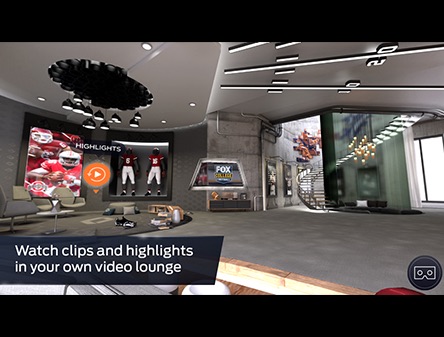Live VR Adoption Speeds Up

On Sept. 21, Amazon-owned video software tech company Elemental Technologies hosted an under-the-radar webinar, a livestreamed discussion on the state of real-time virtual reality content delivery, featuring reps from the VR arm of Nokia Technologies, and the head of Pixel Corps, a little-known group that calls itself the digital “guild for the next generation of craftsmen.”
Tech, media and entertainment companies host live webinars all the time. What made Elemental’s unique: Portions of the hour-long discussion were presented in 360-degree, virtual reality video, with viewers able to pan around between the panelists and those attending the event in San Francisco.
Support for VR viewing of the webinar was limited— simple 360-degree video only worked with Chrome and Firefox browsers (sorry, Safari users), and none of the major VR headsets (Samsung Gear VR, HTC Vive, etc.) were catered to. But despite the limitations, Elemental (which provided encoding work for the live-streamed, 360-degree VR video of the Sept. 6 Red Hot Chili Peppers concert in Berlin) made a point with its webinar: Live VR, for all its imperfections, can be made available relatively easily.
“It’s an early market for VR, yes, but I think the benefit of VR and 360 together is that we’re already able to reach the masses,” said Jyri Huopaniemi, head of formats and platforms for Nokia Technologies (which produces the Ozo VR camera), during the webinar. “It’s how we can reach the audience, be it immersive VR where head-mounted displays [are needed]…or the mass reach of delivering 2D 360 [content].”
VIRTUAL AND REAL
“Live VR is…coming into its own,” said Alex Lindsay, founder of Pixel Corps—and of computer tech companies dvGarage and Rebel Unit.
Lindsay added that more and more media and entertainment companies are taking a chance on virtual reality content. He isn’t wrong, as a quick look at some of the live VR announcements from September prove:
Broadcasting & Cable Newsletter
The smarter way to stay on top of broadcasting and cable industry. Sign up below
• On Sept. 21, the first-ever VR live-streamed eSports event was announced, with eSports event organizer Electronic Sports League (ESL), VR platform company Sliver. tv and production studio WonderWorld VR partnering up to broadcast a Counter-Strike: Global Offensive competition Oct. 1-2 in live VR.
“This new method of broadcasting gives viewers a taste of what it’s like to be in the arena at an eSports mega event, and a brand-new perspective on [competitions] through in-game virtual cameras,” Stuart Ewen, product manager for ESL, said in a statement. “eSports helped pioneer online video streaming, and we couldn’t be more proud to take the next step into the future of broadcast media with this initiative.”
• Also on Sept. 21, NBC announced it had partnered with tech company AltspaceVR to host live-streaming VR versions of every presidential debate, beginning Sept. 26.
• On Sept. 17, Fox Sports offered a VR first, live streaming a VR version of the college football match-up between Ohio State and Oklahoma, offering several on-field video perspectives and the option to synchronize the telecast with the VR content.
“[It’s] particularly meaningful that this experience requires only an iPhone or Android device, allowing us to bring VR to a larger audience than ever before,” Devin Poolman, senior VP of digital platforms for Fox Sports, said when the network announced the initiative Sept. 13.
Fox Sports told Next TV it will do a second live VR presentation for college football with the Oct. 8 Red River Showdown between Oklahoma and Texas.
• On Sept. 12, the World Chess organization announced that a live VR stream of the November world chess championship match between Magnus Carlsen of Norway and Sergey Karjakin of Russia will be streamed exclusively on Worldchess.com.
There’s a reason live VR is becoming more prevalent, Nokia’s Huopaniemi said: “It really boils down to bringing in a new experience for consumers, and we see truly immersive opportunities emerging with VR…for entertainment in particular. Especially when you talk about immersive VR and sports…the first thing that comes to mind is [having a] front-row seat, a virtual ticket to your favorite [game]. That’s something VR can offer, transport you to an event from your home.”
But media and entertainment companies delving into live VR need to be wary when it comes to actual production, cautions Ramón Bretón, CTO for 3rd i QC, a quality assurance and content testing company in Culver City, Calif.
“More than ever before, developers really need to consider what the end user’s experience will be, and anticipate a whole new range of reactions,” he said. “Producers may try to direct the focus of the user at a certain region of the virtual space, but some users…will inevitably choose to focus somewhere totally different.
“There are no ‘offstage’ areas in a VR experience. The entirety of the virtual world presented needs to be considered.”
